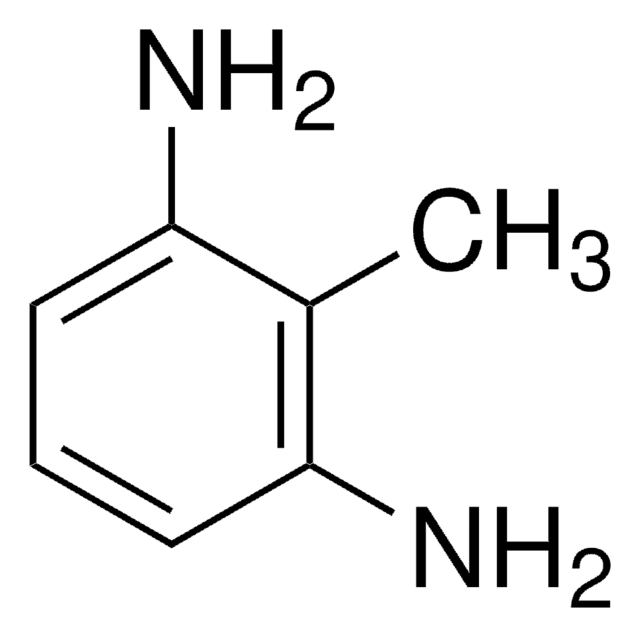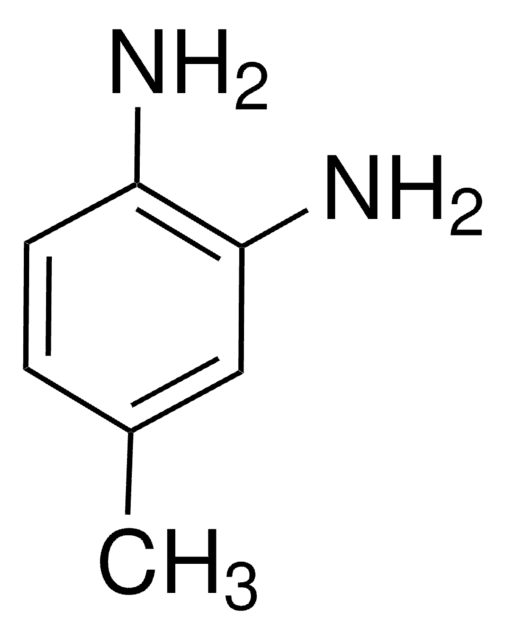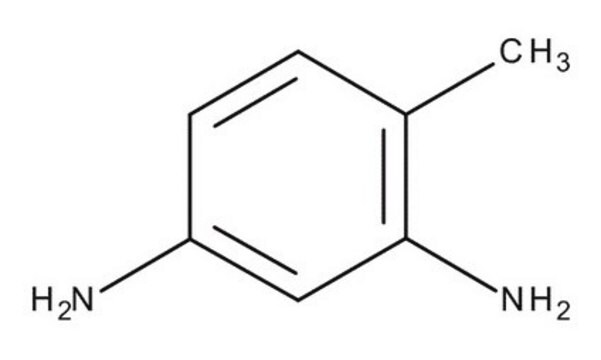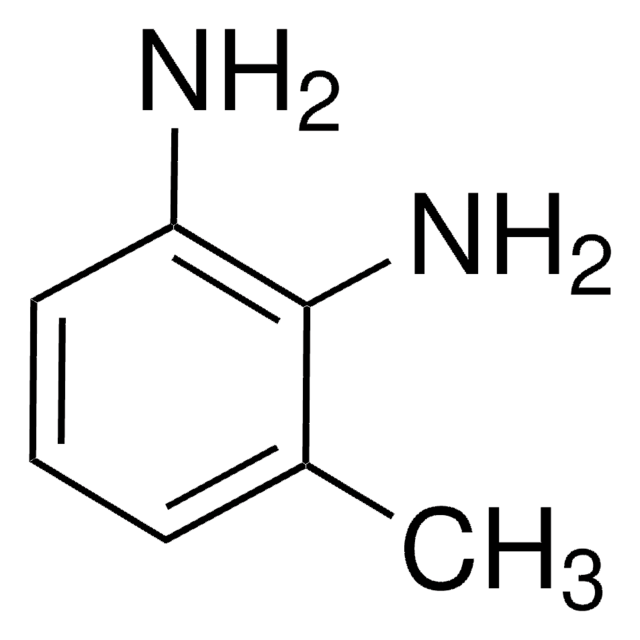101915
2,4-Diaminotoluene
98%
Sinônimo(s):
4-Methyl-m-phenylenediamine, 2,4-Diaminotoluene, 2,4-Toluenediamine, 4-Methyl-1,3-phenylenediamine
About This Item
Produtos recomendados
Nível de qualidade
Ensaio
98%
forma
solid
pb
283-285 °C (lit.)
pf
97-99 °C (lit.)
cadeia de caracteres SMILES
Cc1ccc(N)cc1N
InChI
1S/C7H10N2/c1-5-2-3-6(8)4-7(5)9/h2-4H,8-9H2,1H3
chave InChI
VOZKAJLKRJDJLL-UHFFFAOYSA-N
Procurando produtos similares? Visita Guia de comparação de produtos
Aplicação
- Employing UV/H2O2 process for degradation of 2, 4-Diaminotoluene in synthetic wastewater: This study explores the degradation of carcinogenic Toluene-2, 4-diamine in synthetic wastewater using the UV/H2O2 process, highlighting its potential for improving water treatment methods (J Hosseini, A Shokri, 2017).
- Development of magnetic, ferrite supported palladium catalysts for 2, 4-dinitrotoluene hydrogenation: The paper discusses the use of Pd/NiFe2O4 catalyst for efficient hydrogenation of 2,4-dinitrotoluene to 2,4-diaminotoluene, demonstrating a high yield and potential for industrial applications (V Hajdu, M Varga, G Muránszky, G Karacs, 2021).
- Synthesis, characterisation and energetic performance of insensitive energetic salts formed between picric acid and 2, 3-diaminotoluene, 2, 4-diaminotoluene: This paper presents the synthesis and characterization of new energetic materials, which could be significant for the development of safer explosives and pyrotechnic devices (N Şen, H Nazir, N Atҫeken, KS Hope, N Acar, 2020).
Palavra indicadora
Danger
Frases de perigo
Declarações de precaução
Classificações de perigo
Acute Tox. 3 Dermal - Acute Tox. 3 Oral - Aquatic Acute 1 - Aquatic Chronic 2 - Carc. 1B - Muta. 2 - Repr. 2 - Skin Sens. 1 - STOT RE 2
Órgãos-alvo
Liver,Kidney
Código de classe de armazenamento
6.1C - Combustible acute toxic Cat.3 / toxic compounds or compounds which causing chronic effects
Classe de risco de água (WGK)
WGK 3
Ponto de fulgor (°F)
320.0 °F - closed cup
Ponto de fulgor (°C)
160 °C - closed cup
Equipamento de proteção individual
Eyeshields, Faceshields, Gloves, type P3 (EN 143) respirator cartridges
Escolha uma das versões mais recentes:
Já possui este produto?
Encontre a documentação dos produtos que você adquiriu recentemente na biblioteca de documentos.
Protocolos
GC Analysis of Anilines on Equity®-5
Nossa equipe de cientistas tem experiência em todas as áreas de pesquisa, incluindo Life Sciences, ciência de materiais, síntese química, cromatografia, química analítica e muitas outras.
Entre em contato com a assistência técnica









